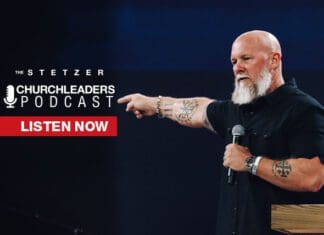Former National Security Advisor and Secretary of State Dr. Condoleezza Rice recently sat down for an interview with John Ortberg, the senior pastor of Menlo Church in California. In the interview, Rice shared her thoughts on the coronavirus outbreak based on the life lessons she has learned, particularly from her encounters with racism as a child and her time as a national leader during 9/11. These and other experiences have shaped her understanding of how to navigate fearful circumstances with faith.
“I’ve always tried to acknowledge my fear and anxiety,” observed Rice. “I think if you push it down, it just festers. And if you call it by name, then I think you can work on it, and you can work on it with the Lord because you’ve called it by name.”
What Condoleezza Rice Has Learned About Faith and Fear
Condoleezza Rice grew up as the daughter of a minister in Birmingham, Alabama, which was “the most segregated city in America at the time.” Faith was very much a part of her family heritage. “I had always been in church from a little, little girl,” she said. Despite growing up in the Jim Crow era, Rice was part of a loving community that “felt like a little safe cocoon”—at least, it did until 1962 and 1963 when “suddenly Birmingham was Bombingham.”
On September 15, 1963, the 16th Street Baptist Church was bombed, killing four little girls and injuring at least 14 other people. Everyone in Rice’s community had known at least one of the girls who were killed. There was a lot of fear at the time. They could not trust the police, said Rice, because the police were just as likely as not to be setting off bombs targeting black people. White knight riders with the Ku Klux Klan would come through their community, so Rice’s father and his friends ended up forming a militia of sorts to protect people from the KKK.
“All we could do in those days was to pray,” said Rice, “and I have to say, it was sufficient. It was sufficient to calming my parents. It was sufficient to calming me and my friends. In those days, you could start off school with prayer, and we started off every class every day with prayer.”
Then President Kennedy was assassinated, as were Robert Kennedy and Dr. Martin Luther King, Jr., later on. “It just seemed to keep coming,” she said. But in spite of all of that, Rice’s parents remained secure in their faith in God and helped to pass that trust on to her.
Rice said she has a family heritage of valuing the “life of the mind” and of knowing the importance of understanding the Scriptures in-depth. She credits her father as being partly responsible for the fact she never had a faith crisis as she grew increasingly educated. “From the very beginning,” she said, “he let me ask questions. From the very beginning, he would acknowledge that there were hard things about our faith, that it wasn’t what I call ‘fast food faith.’ You really had to struggle with it.” Sometimes Christians think that having faith in God means never asking difficult questions, but Rice disagrees. It’s all right to wrestle before God with painful experiences.
Condoleezza Rice on 9/11 and the Coronavirus
On a personal level, Rice’s most difficult times in life have been the deaths of her parents. Professionally, her most challenging experience was 9/11. She dealt with a lot of fear, anxiety, remorse, and regret in the aftermath of the terrorist attacks. Said Rice, “If you’re the National Security Advisor on the day that thousands of people die, you know intellectually that you did everything you knew to do, but by definition, you didn’t do enough. And you never ever quite let go of that.” Even though Rice still struggles with feeling like she failed because of 9/11, she has experienced healing over time as she has prayed about and processed what happened and as she has received grace from other people.
Ortberg pointed out that the coronavirus outbreak has caused the United States to face what is arguably its weightiest moment since 9/11. He asked Rice what advice she has regarding how people should pray and think about the challenges caused by the virus.
A crisis, responded Rice, can either cause us to focus on ourselves or prompt us to focus on how much we need one another. “We are among the most individualistic people in the world,” she said, but “We also can be very communitarian when things are at their worst.” She observed that while the Chinese have “flattened the curve” of the virus, they have done so through authoritarianism. In contrast, she said, “We’ve got to depend on 300 million Americans to do the right thing. But that’s who we are. And we’re seeing across the country people trying to do the right thing.”
So her advice is, first, that people should do the right thing for themselves as individuals as a way of helping their communities. Second, she encouraged people to reach out to others and to help the most vulnerable. This could look like calling shut ins or like comforting kids, who are probably scared right now. We should remember to be thankful to our healthcare workers and first responders, who are exhausted. We can also pray that God would help us know how we can help others.













